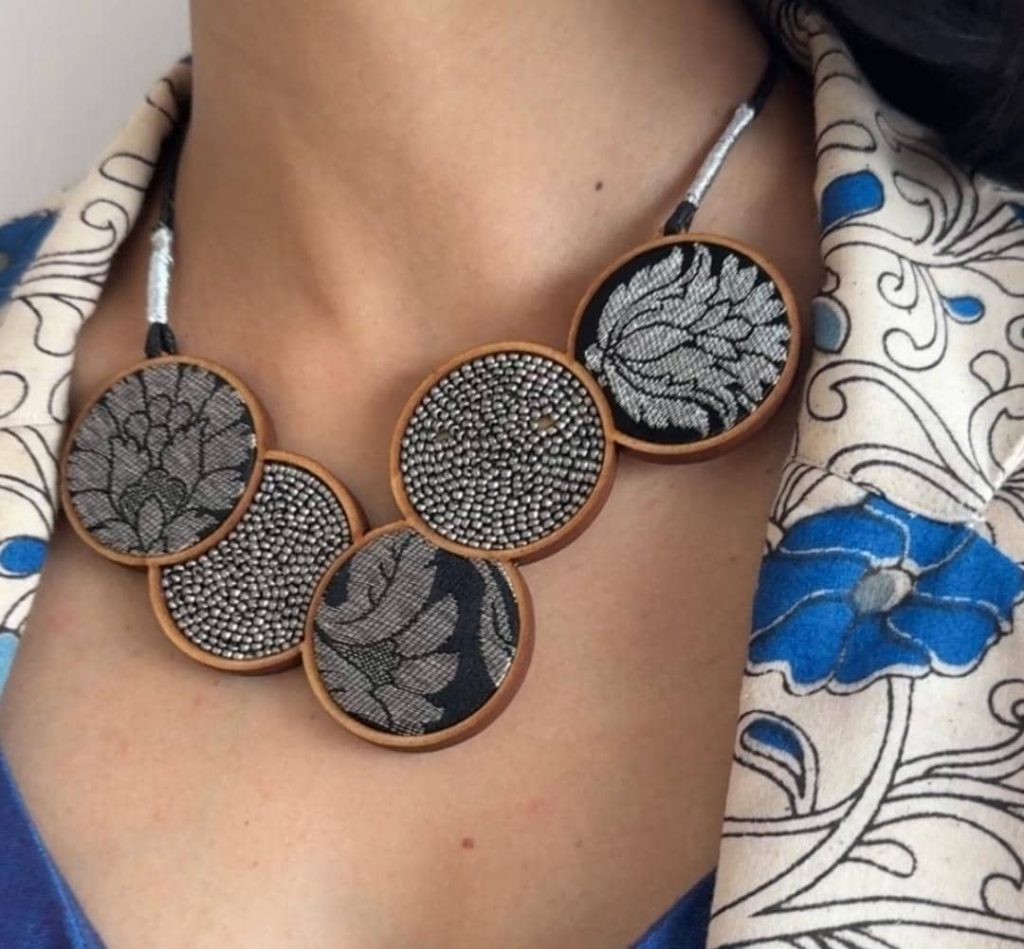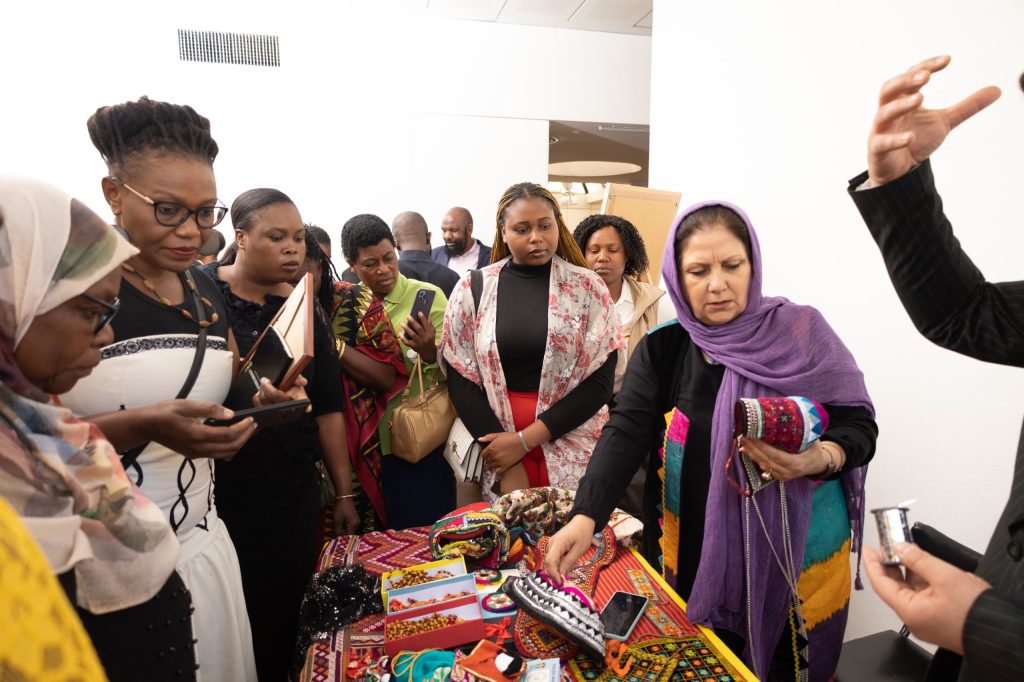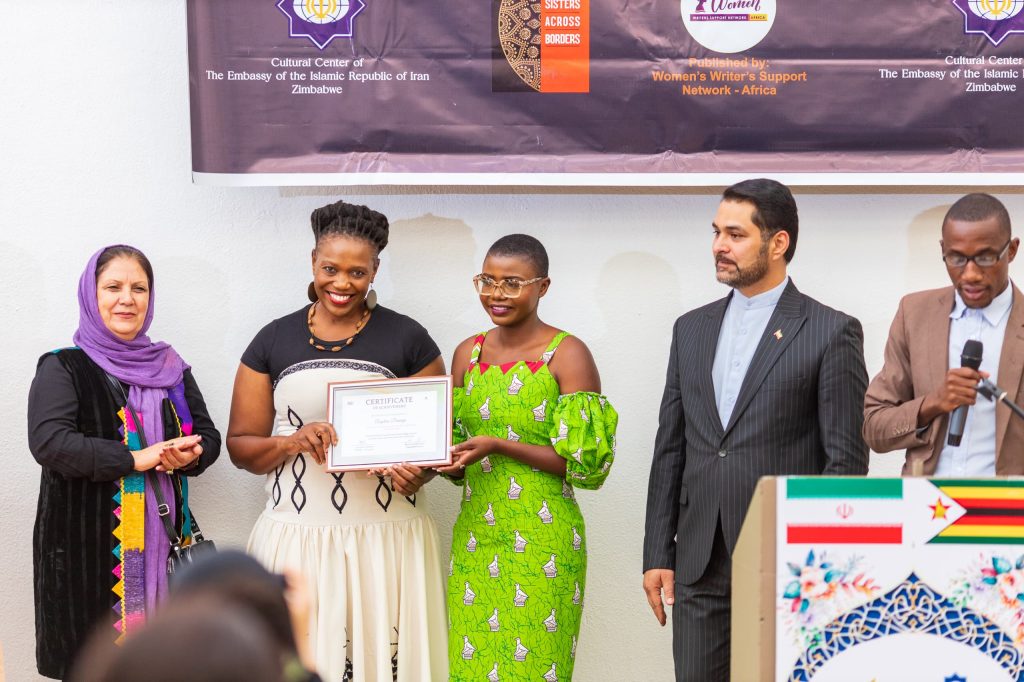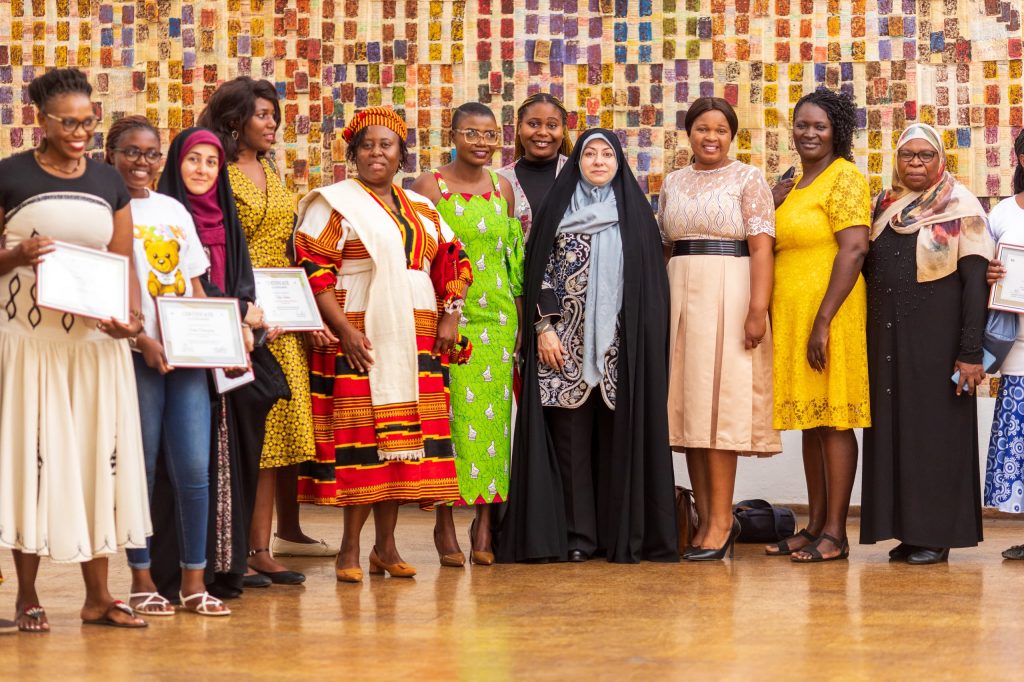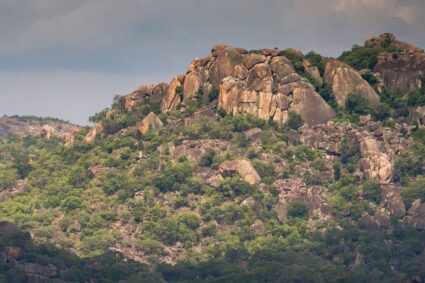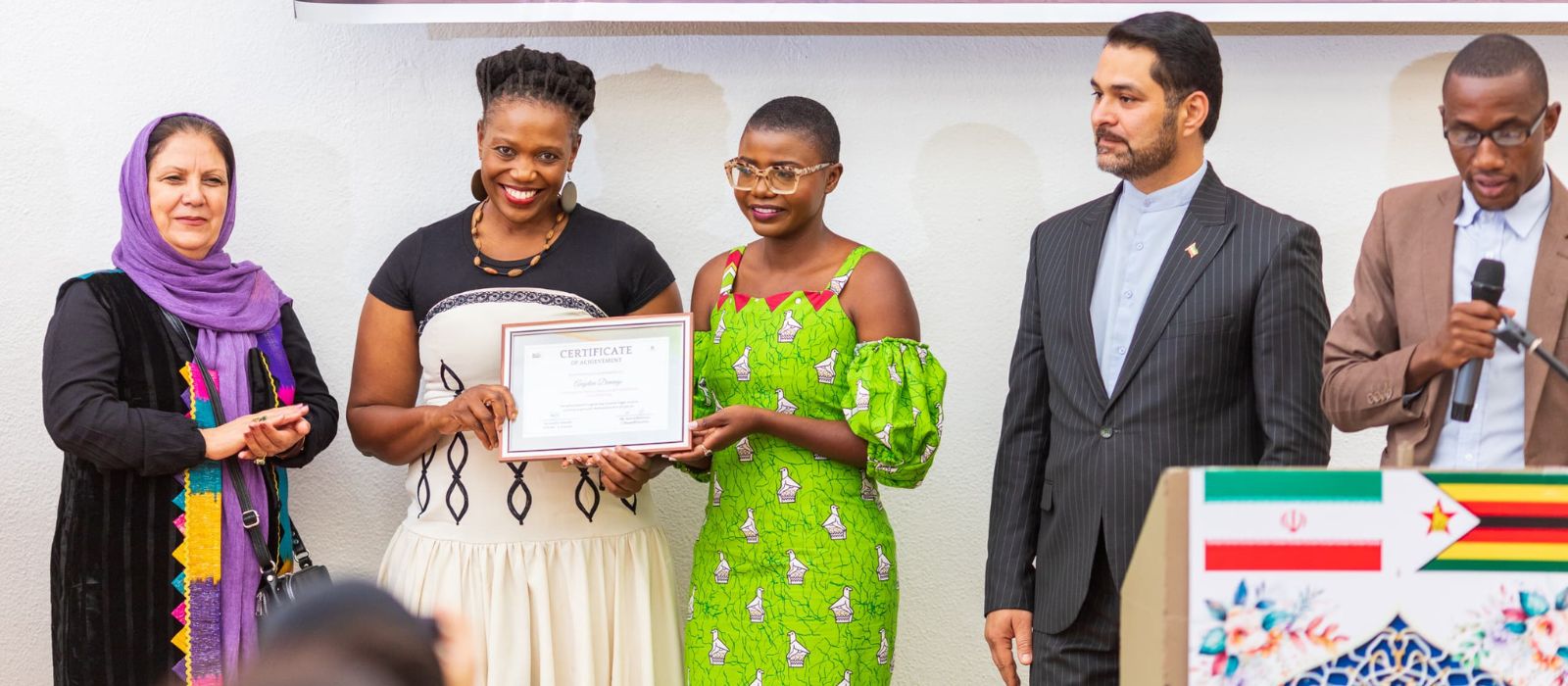
Parvaneh Amirian is a fashion designer, eco-tourist, and artist whose tapestry work has established her as a leading businesswoman in Iran. She was among the select individuals chosen to participate in the Zimbabwe-Iran exchange program held this October.
Our columnist, Sympathy Sibanda, had an exclusive chat with her on the sidelines of the two-day meet-and-greet event.
SS: Thank you for Parvaneh for talking to me. It really is a pleasure holding this chat to understand a lot about women in both our countries and how we can benefit from our networking initiatives.
PA: Thank you for this honour dear Sympathy.
SS: Who is Parvaneh?
PA: I am a multitalented person with over 35 years’ experience in the field of teaching design, sewing and handicrafts, including traditional embroidery. I am a trainer in handicrafts and a director for various entities that have something to do with handicrafts, tourism, and uplifting ethnic communities.
SS: Wow, that is impressive. It looks like you do a lot of things. Do you have enough support whether personally or within the nation?
PA: I love what I do and that is the beginning of the journey. In Iran I am in a business relationship with the Ministry of Culture and Islamic Guidance, Islamic culture and communication organization, Ministry of Cultural Heritage, Tourism and Handicrafts, and Ministry of Social Affairs. This helps me to reach a greater populace and have more impact. Without networking, a business has no hope of survival and through these collaborations it is easier to conduct our business.
SS: I love the aspect you talked about in your presentation regarding ecotourism. I think it is something that can be adopted right here in Zimbabwe. Tell me about that part of your business.
PA: I think ecotourism is a business that can be adopted anywhere in the world and Zimbabwe is a beautiful country with resources for this. We are a large national group operating throughout Iran and in a virtual group where we share what we have learned every day and we are in communication with each other. Our activities in this group are in the field of capacitating Iranian ethnic groups and in the fields of traditional clothes and needlework. We keep training in our handicrafts, food industries, music, traditional rituals, etc. We have a rich heritage which we have commercialized as we have extensive specialised activities in the national and international fields that tourist can benefit from.
SS: When you describe it like that, I start seeing how as Zimbabwe we also have a rich heritage that we can commercialize extensively. So what is the name of your group and how can we follow to learn from you?
PA: The name of our group is the culture of Iranian ethnic groups. And I share my tourism activities on Instagram @parvanehamirian6191
SS: What inspired you to participate in the exchange program with Zimbabwe through the Cultural centre of the Republic of Iran?
PA: I have for the past years had a longing to travel to the beautiful land of Africa. When the offer came, I accepted without hesitation and its one of the most beautiful decisions I have done.
SS: I am glad you said yes. What expectations or hopes did you have before your visit?
PA: Before the trip, I had a very good feeling and knew that I would have new experiences and of course I was a little anxious. I tried to learn more about women and the land of Africa and the country of Zimbabwe. Although the journey was long and difficult, it was full of surprises and more knowledge for me. I am very happy that I came.
SS: How was your overall experience in Zimbabwe, any unexpected surprises?
PA: I learnt that Zimbabwe is a country with valuable and unique natural and cultural potentials and can progress a lot and benefit from its resources. I really loved the art that was exhibited. My biggest surprise was seeing the art of painting on cloth and the beautiful and artistic works that were done on stone. These two arts are among the luxury and expensive arts in the world, which have many requests in the field of clothing and fashion, and masonry artworks are among the expensive and luxury goods in very luxurious homes. These two arts are found abundantly in your land, and with an upcoming organisation, they can greatly contribute to the economy of your nation.
SS: What did you think of Zimbabwean women?
PA: I saw that Zimbabwean women are very strong, calm and capable. In this short time, I did not see any violence in women, it was only kindness and respect that I witnessed.
SS: What did you learn with this cultural exchange?
PA: My experience in this cultural exchange between the two countries was that: with good physical strength and valuable natural resources, African women can be very effective with their ability to build more and especially help their children’s progress by acquiring various arts according to the needs of the society.
Our large team in Iran consists of many valuable professors and specialists who can provide the necessary training for African women, empowering them through art and the jobs they create at home with their children. Iranian women and African women can establish strong cultural and commercial relationships in various artistic endeavors.
SS: What are you grateful for as you reflect on this trip?
PA: My visit to Africa is part of the treasure of my life. I hope to come back and visit the majestic Victoria Falls. Zimbabwe is truly the jewel of Africa. I am grateful for gaining new friends including you Sympathy. I will tell about your beautiful art in my tourism collection for tourists.
A very special thank you to the capable cultural advisor of Iran in Zimbabwe, Mr. Hamid Bakhtiyar, who worked very hard and created a very good platform for cultural exchanges between the women of Zimbabwe and Iran. His efforts deserve appreciation. In the end, I thank all of you kind women of the land of Africa.
SS: Thank you for your time Parvaneh. I am glad to call you my new friend and hope to work together in the future.
PA: It is my absolute pleasure. Thank you Sympathy.
